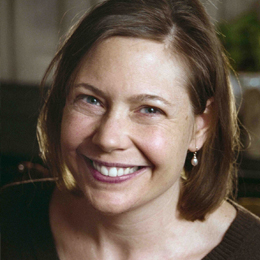Fighting a Deadly Virus
Hartwell Award will help scientist explore new ways to tackle RSV

Respiratory syncytial virus, or RSV, is a highly contagious virus that attacks people’s lungs and airways. For healthy adults, infection often leads to mild symptoms that feel like a cold. But for children and babies, the effects can be severe. RSV is a major cause of pneumonia in infants and young children in the United States, and the leading cause of viral death in infants.
Rachel Fearns, an associate professor in the microbiology department at Boston University School of Medicine (MED), hopes that a deeper understanding of RSV may lead to better treatments. She won a 2014 Hartwell Individual Biomedical Research Award from the Hartwell Foundation, which will give her $300,000 over three years to study the molecular mechanisms that allow RSV to replicate and multiply. Fearns hopes that her research might eventually lead to antiviral drugs and vaccines to treat and prevent RSV disease and give insight into how related viruses could also be controlled.
Fearns studies a protein within the virus called a polymerase, a complicated enzyme with two different jobs: first, it copies the RSV genome into messenger RNAs to make viral proteins, a process called transcription; and it also makes more copies of the genome, a process called replication. She was the first scientist to isolate and purify RSV polymerase, a “technically challenging” process, she says, that took her six years, from 2004 to 2010. One of the challenges was that RSV polymerase is so large—more than five times larger than the average cellular protein—and therefore difficult to make efficiently and correctly. “Most normal people would have given up,” she says, laughing.
Fearns wanted a pure copy of the protein so she could study its function in detail. “We wanted something we could work with in a test tube,” she says. “How does this one protein do both transcription and replication, and how does it choose which one to do? It’s a big scientific question.”
So far, scientists studying RSV polymerase have learned that it has at least three distinct parts with three different functions, as well as other parts that are not well understood. “We want to understand those unexplained parts,” says Fearns, “because any essential protein activity is potentially a good target for antiviral drugs.” She also notes that RSV is closely related to measles, mumps, and some emerging viruses such as Marburg and Ebola. “In the long term, anything we learn with RSV would likely be applicable to those other viruses,” she says.
Each year, the Hartwell Foundation awards grants to faculty in the early stages of their research careers who are involved in innovative, cutting-edge biomedical research that will potentially benefit children. For Fearns, it means a chance to pursue science that is high risk, with a potentially large payoff. “It’s exciting science,” she says, “and I’m glad to have the opportunity to work on it.”

Comments & Discussion
Boston University moderates comments to facilitate an informed, substantive, civil conversation. Abusive, profane, self-promotional, misleading, incoherent or off-topic comments will be rejected. Moderators are staffed during regular business hours (EST) and can only accept comments written in English. Statistics or facts must include a citation or a link to the citation.